Terminology
This section is a small dictionary of Naval and submarine[1] terminology for those not cursed with the innate knowledge of this language.
Angle on the Bow – the direction the target is traveling relative to the submarine. An Angle on the bow of 00 means dive deep, you’re in trouble.
AOR – Area of Responsibility. Frequently called AO for Area of Operations.
ASDIC – active sonar that derives its name from the World War I group who sparked its development, Allied Submarine Detection Committee. In interwar years ASDIC felt to be unbeatable and therefore submarines must be obsolete[2].
ASW – Anti Submarine Warfare.
Ballast Tank – part of the submarine meant to fill with water to change buoyancy and cause the submarine to sink. When compressed air is blown into ballast tanks, the water is forced out the bottom and the air remains. The now lighter submarine floats.
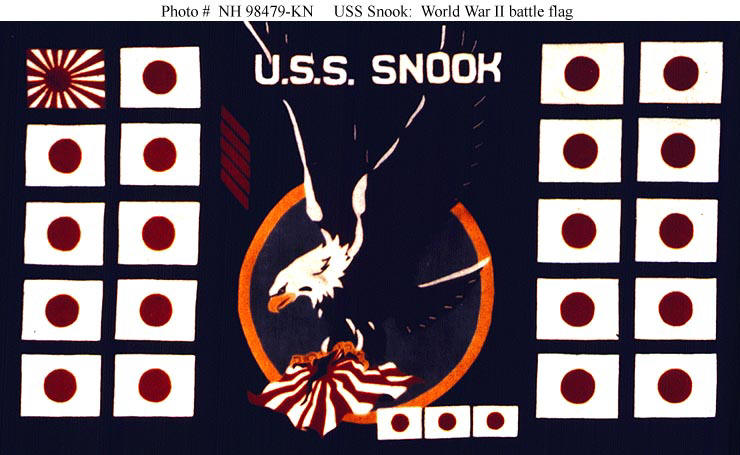
Figure 3. Battle Flag of USS Snook (SS-279).
Battle Flag – World War II tradition for submarines displayed a caricature to represent the submarine and her crew and their personality as well as the kills claimed. While as many as 30% of all claims were later proven false, the flags are still preserved as they were.
Beam – width of ship at widest point. That point is also a reference point for relative bearing.
Bearing – simply the direction. Bearing can either be in terms of True North (called True) or relative to the vessel (relative). For relative bearing the bow is 00 and to the left is port called Red and to the right is starboard called Green. Lookouts use relative bearing. Radar operators use true.
Bow – the pointy end of the boat. Considered 0 as reference in relative bearing
BuOrd – Bureau of Ordnance the Navy Bureau charged with developing weapons, more particularly exploding weapons such as bombs, shells, and torpedoes. Very bureaucratic organization with massive inertia.
CINC – Commander in Chief, head man what’s in charge. Pronounced “sink”.
CINCPACFLT – Commander in Chief, Pacific Fleet, ADM Chester Nimitz. He did NOT command all Navy forces in the Pacific as the title suggests, GEN Macarthur as COMSOWESPAC had control of the 7th Fleet and other Naval assets. In modern times, CINCPACFLT does own and control EVERY U.S.N. asset between the Mississippi River and the Suez Canal.
COMSUBPAC – Commander, Submarines, Pacific. This term in World War II relates to the commander of submarines operating from Pearl Harbor (and later Midway and Saipan and Guam). It also stands for his command. CDR Richard Voge worked at COMSUBPAC for most of the war. The modern usage is more correctly Commander, Submarines, Pacific Fleet (like anybody else in the military might be operating submarines besides the fleet).
COMSUBSOWESPAC – Commander, Submarines, South West Pacific, the American commander of submarines out of Australia. Inherited the remnants of the Asiatic Fleet following the fall of the Philippines in 1942. Responsible to Macarthur and 7th Fleet, but not to ADM Nimitz. Commanded submarines out of Brisbane and Fremantle. Included Dutch, RN and RAN boats.
Clean Sweep – Submariners returned from a successful patrol with a broom attached to the shears signifying a clean sweep, meaning they had swept the enemy from the seas. In simpler terms, if the submarine fired torpedoes and sank at least one ship, a new broom would be hoisted upon entrance to the harbor.
,%20center,%20and%20USS%20Sarsfield%20(DD-837),%20at%20right.%20%20Dropping%20depth%20charges%20during%20anti-submarine%20warfare%20exercises.jpg)
Figure 4. USS Epperson (DDE-719), center, and USS Sarsfield (DD-837), at right. Dropping depth charges during anti-submarine warfare exercises.
Depth Charge – bomb or explosive charge armed with a pressure sensitive detonator or in cheap cases time delayed detonator. Meant to over pressure the hull of a submarine and crush it.
Displacement – term to describe the “weight” of the vessel. It is the weight of the water moved out of the way, or displaced, by the vessel. Since submarines on the surface are physically displacing water with only what’s in the water, they usually have two displacements listed a surfaced and submerged. For simplification, I have used the surfaced displacement here.
%20diving%20planes%20are%20rigged%20out.jpg)
Figure 5. USS S-41 (SS-146) diving planes are rigged out.
Diving Planes – horizontal fins much like and airplane’s elevator. used to control the boats angle relative to horizontal so the screws would drive the boat either up or down as desired. used in conjunction with the ballast tanks.
Draft – the minimum depth of water to float the boat. Submarines have a variable draft depending on how much air is blown into the ballast tanks.
Fuel Bunkerage – the amount of fuel a ship or boat can carry. Although fuel is now liquid and kept in tanks, the amount (in tons) that can be carried is still referred to as bunkerage from coal fired days.
FM – Frequency Modulation. Late war type of active sonar which used frequency modulated signal processing.
The Gun Club – derogatory name for BuOrd based on the over importance given to development of battleship guns.
Head – the naval term for the bathroom goes back to sailing ships, so blame the British Royal Navy. German Untersee boots of World War II typically used the bilges. US Navy submarines had true bathrooms and septic tanks.
HF/DF – High Frequency Direction Finding. Capability to obtain a bearing on an HF long range transmission.
H.O.R. - Hooven-Owens-Rentscher Ohio engine manufacturer.
Hot bunking – to save space on a small vessel roughly 1/3 to 1/2 of the beds (racks) needed are installed since at any given time only 1/3 of the crew is off watch and off duty to sleep. That means as soon as you get up for work, some one else gets in before the sheets have cooled from your body heat, hence the term hot bunking. Major habitability issue.
IJA – Imperial Japanese Army.
IJN – Imperial Japanese Navy.
JANAC – Joint Army Navy Assessment Committee. Formed following World War II to go over Japanese records to determine actual damage done by what forces. In the case of submarines, JANAC could only verify roughly ½ of the totals claimed. Since Japanese records were incomplete and even falsified, JANAC scores have errors. Still JANAC, having looked at all existing documentation and evidence is the benchmark for submarine scores[3].
LF – Low Frequency. Radio frequency capable of medium to long range use capable of penetration water to a depth of about 100’. LF Band from 30 kHz to 300 kHz. Precursor to modern VLF (Very Low Frequency) communications with submerged submarines.
Magic – code name applied to high level Japanese war time decryptions. Frequently confused with the Ultra decryptions of German Enigma message traffic. Like the Ultra intercepts, only a small number of transmissions were successfully decoded.
M.A.N. - Maschinefabrik-Augsburg-Nürnberg. German diesel engine design and manufacturer.
Maru code - low level IJN code used by merchant and transport vessels daily to give position, speed, and course. This proved to be much more useful to COMSUBPAC and COMSUBSouWestPAC than Magic intercepts. Much simpler code and therefore easier to decrypt.
Mothballed – slang term for preservation and storage of a ship or boat no longer needed but for what ever reasons is not to be scrapped.
NAS – Naval Air Station or Navy airport. Between war year doctrine gave submarines no chance to exist within 500 miles of a NAS.
NIH – Not Invented Here. Syndrome which can affect bureaucrats and prevent cooperation on new ideas. Also shown in insistence that “they” are wrong and “we” are right without testing or checking data.
NS – Naval Station or Naval Shipyard. The first is a home base for ships and the second can built or repair anything.
NTS – Naval Torpedo Station. Base to develop, produce, and maintain torpedoes.
%20'Coming%20to%20the%20Surface',%20prior%20to%20World%20War%20I%20-%20note%20the%20submarine%20'fish'%20flag%20atop%20her%20after%20periscope.jpg)
Figure 6. USS D-3 (Submarine # 19 aka USS Salmon) "Coming to the Surface", prior to World War I - note the submarine "fish" flag atop her after periscope.
Periscope – device made of prisms and lenses in a metal tube which allowed the submarine commander to see above the surface of the water when submerged. Through aiming the periscope at the target, a bearing was generated and sent to the TDC. Early ranges were eyeballed estimates and were shouted to the TDC crew and entered manually. Later optical range finders could generate a signal to transmit to the TDC.
Radar – RAdio Detection And Ranging. Uses radio waves to bounce off target and return to give range and bearing of object.
RAN – Royal Australian Navy.
RN – Royal Navy, the navy of Great Britain. Origin of many of the odd naval traditions still in play. Waning hegemon in World War II.
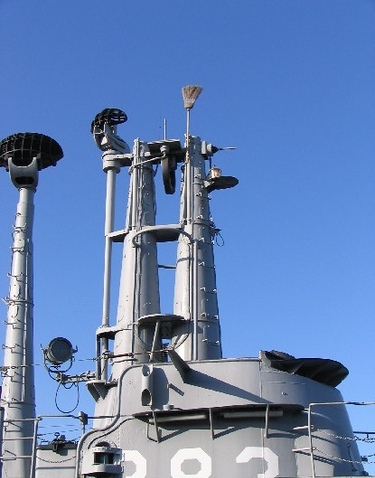
Figure 7. Shears of USS Pampanito (SS-383) ant Fisherman's
Warf in San Francisco, CA. Shears hold the periscopes and radar
antennae. Note the Clean Sweep broom also tied to the shears.
(Courtesy of San Francisco Maritime Museum http://www.maritime.org/pamphome.htm)
Shears – the structure on the submarine that supported the periscopes and radar antenna as well as held two lookout stations.
Sonar – SOund Navigation And Ranging. Listening to the sound in the water to find targets or dodge escorts. Can be active (see ASDIC) or passive.
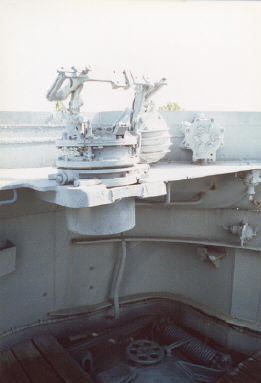
Figure 8. Torpedo Bearing Transmitter on USS Batfish
(Courtesy of USS Batfish (SS310) website http://www.ussbatfish.com/index.html)
TBT – Target Bearing Transmitter. Cradle for binoculars that could send the bearing the
binoculars were pointed to the TDC.

Figure 9. Mark IV Torpedo Data Computer aboard USS Cod (SS-224) (Courtesy of The USS COD Submarine Memorial http://www.usscod.org/).
TDC – Torpedo Data Computer. Calculated the range the torpedo had to run and most
importantly the bearing from the submarine’s bow it needed to run.
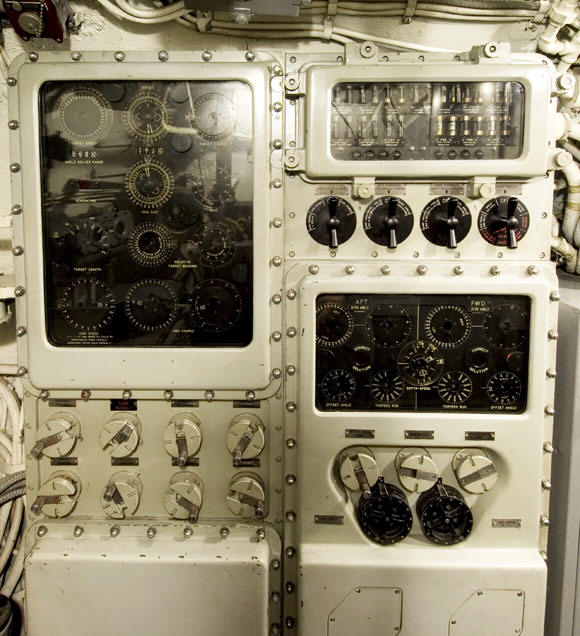
Figure 10. TDC Mk III aboard USS Pampanito (SS-383) (
(Courtesy of San Francisco Maritime Museum http://www.maritime.org/pamphome.htm)
VHF – Very High Frequency. Radio sets built to use the VHF band (30 MHz to 300
MHz) for short range line of site communications.
Ship class abbreviations[4]
AK – Naval supply ship. Ships used for supplying an amphibious assault are classified as AKA.
%20Ms%2012%20(Mod).jpg)
Figure 11. USS Bellatrix (AKA 3) in Ms 12 (modified).
AP – Naval transport for personnel or troop transport. APA stands for Auxiliary, Personnel, Assault.

Figure 12. USS Feland (APA 11) in camouflage Measure 32 design 3D
AV – Aviation Support or seaplane tender, such as USS Langley following conversion from aircraft carrier.
BB – Battleship.
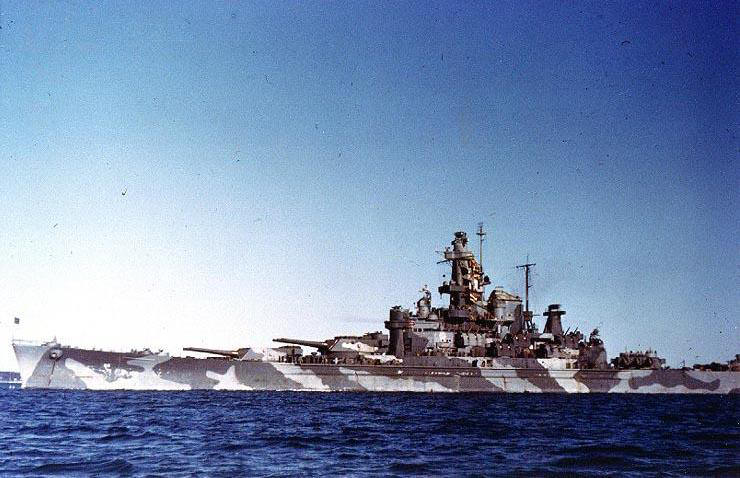
Figure 13. USS Alabama (BB-60) in camouflage Measure 12 (modified) in Casco Bay, Maine.
BC - Battle Cruiser. The aircraft carriers USS Lexington (CV-2) and USS Saratoga (CV-3) were begun as battle cruisers.
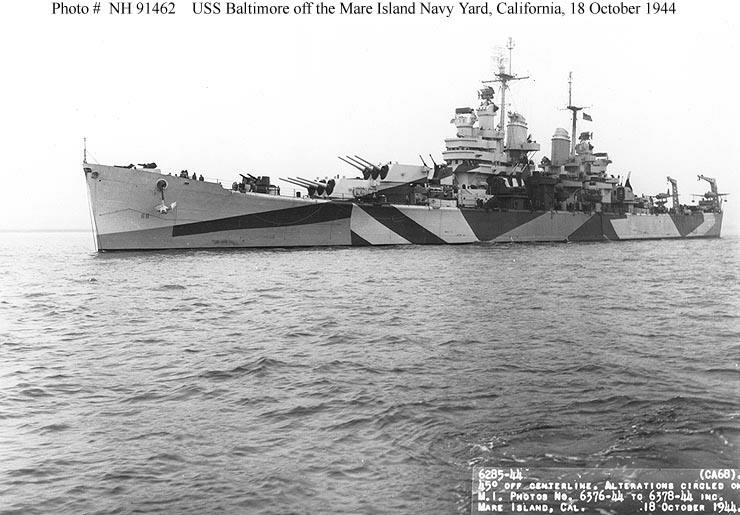
Figure 14. USS Baltimore (CA-68) off the Mare Island Navy Yard, California, 18 October 1944. Her camouflage is Measure 32, Design 16d.
CA – Heavy cruiser. Used here if class of cruisers is not clear.
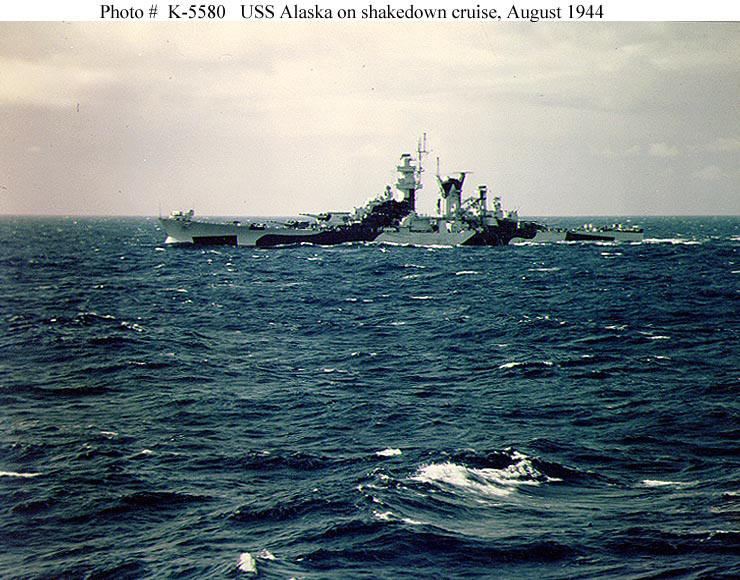
Figure 15. USS Alaska (CB-1) photographed from USS Missouri (BB-63). Ms 32 1d.
CB – Battle cruiser or large cruiser. USS Alaska (CB-1), USS Guam (CB-2), and USS Hawaii (CB-3) were built as CB battle cruisers, then renamed as large cruisers.
CC – Battle cruiser. Saratoga and Lexington began construction as battle cruisers.
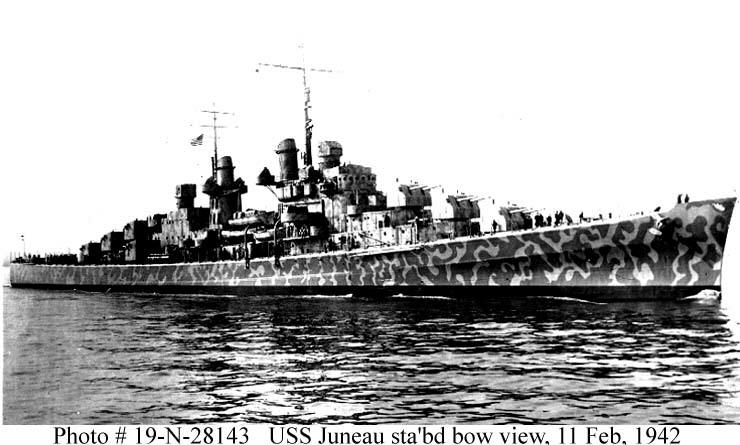
Figure 16.
USS Juneau (CL-52) in New York Harbor, 11 February 1942. Note
camouflage scheme applied to this newly-completed cruiser. This has been
rumored to be Ms 12 (modified) in shades of green instead of shades of grey.
CL – Light cruiser.
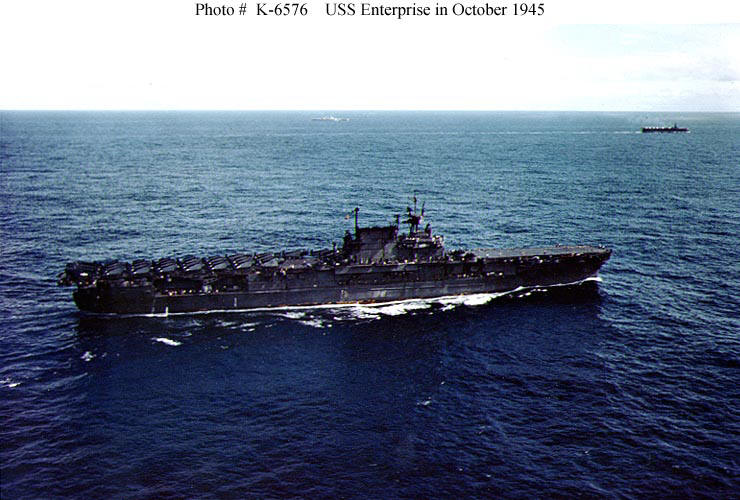
Figure 17. USS Enterprise (CV-6) en route to New York to take part in the Navy Day Fleet Review, October 1945. The all blue color scheme is Measure 21.
CV – Aircraft carrier.
%20after%20a%20September%201943%20Mare%20Island%20refit.jpg)
Figure 18. USS Chenango (CVE-28) after a September 1943 Mare Island refit. Ms 21.
CVE – Escort (or “jeep”) carrier. Not a fast enough ship for fleet action, but very capable of escorting convoys to protect against submarines. Also used to support landings unit an airfield could be made operational.
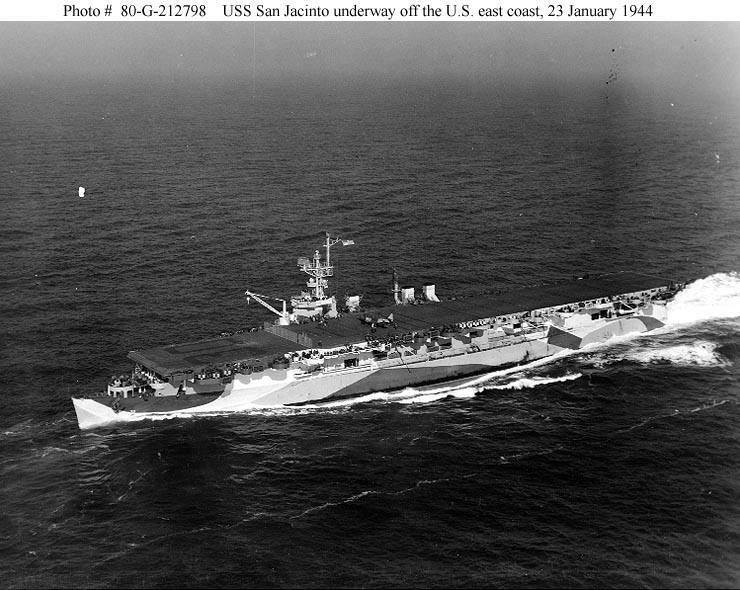
Figure 19. USS San Jacinto (CVL-30) 23 January 1944. She is painted in camouflage Measure 33, Design 7a
CVL – Light carrier. Smaller than a full CV, but still able to keep up with fleet operations. Larger than a CVE. Built on cruiser hulls.

Figure 20. USS Drayton (DD-366) wearing MS 21 Camouflage
DD – Destroyer

Figure 21. USS Varian (DE-798). Photographed while she was operating out of Miami, Florida, summer 1945 Ms 32 16d.
DE – Destroyer Escort. Smaller than a full DD but well capable of giving submarines trouble.
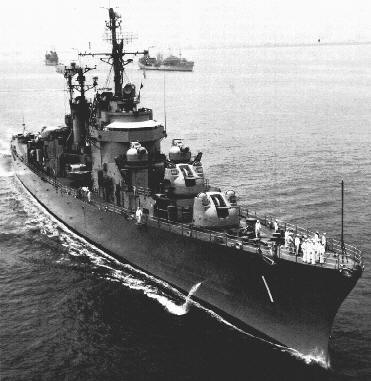
DL – World War II classification for frigate, a vessels a little smaller than a CL. In the 1960s, DEs in the US Navy were reclassified as frigates and given the designator of FF (as a former frigate sailor, I promise this does not stand for “fast frigate” as the one I briefly served on could not keep up with the carrier it supported during flight operations).
SS – Submarine. Submarines are referred to as boats instead of ships even though many are larger that World War II DDs and DEs.
Figure 22. USS Norfolk (DL-1)
Naval Rank Structure and Abbreviations
ADM – Admiral, four star naval flag officer – O-10.
VADM – Vice Admiral, three star naval flag officer – O9.
RADM – Rear Admiral, covers one and two star flag officer ranks. These may be
differentiated by (Upper) for two-star, and (Lower) for one-star. These are not used here.
COM – Commodore, naval title given to one who is not an admiral who commands
captains. As ship, or boat in this case, can have only one captain, an O-6 Captain (not commanding the submarine) will be referred to as Commodore when embarked[5]. Submarine Squadron commanders in World War II were referred to as Commodores.
CAPT – Captain, O-6, not to be confused with the lower case captain who is the
commander of the ship. A captain may be a LT (jg) on a small boat.
CDR – Commander, O-5, not to be confused with a commander, the person in charge.
LCDR - Lieutenant Commander, O-4. Perfect rank for a naval officer. High enough to
dodge what rolls down hill, low enough to duck. Commanded fleet boat submarines in World War II.
LT – Lieutenant, O-3, equivalent to Army or Marine Captain.
LT (jg) - Lieutenant (junior grade) O-2. Army or Marine 1st Lieutenant.
ENS – Ensign, O-1.

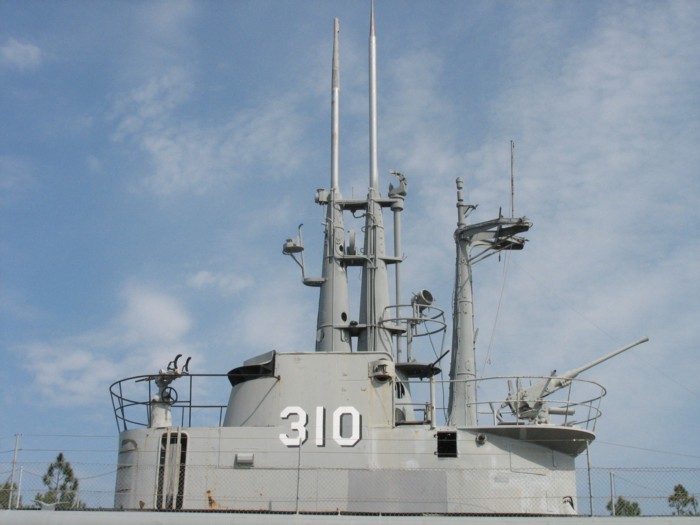
Figure 23 & 24. Balao class bridge of USS Batfish. (Courtesy of USS Batfish (SS310) website http://www.ussbatfish.com/index.html)
[1] The historiography of World War II American Submarines is unfortunately very simple. The grandfather is Theodore Roscoe’s United States Submarine Operations in World War II. Written for the Bureau of Naval Personnel from material prepared by R. G. Voge [and others] released in 1949. Clay Blair introduced his Silent Victory: the U.S. Submarine War Against Japan in 1975. Peter Padfield’s War Beneath the Sea: Submarine Conflict during World War II from 1996 while building on the previous. authors does add a different perspective as Padfield is not a fan of ADM King and seeks out opportunities to show fault with the command structure as a reflection of ADM King. Keith Milton on the other hand take umbrage at the IJN inability to see their own weaknesses and react to them in his 2000 Subs Against the Rising Sun. Steven Trent Smith in his 2003 Wolf pack: the American Submarine Strategy that Helped Defeat Japan only focused on the wolf packs which were only around one third of the patrols in 1944 and 1945.
[2] Peter Padfield. War Beneath the Sea. (New York: John Wiley and Sons) 1998. 18.
[3] Clay Blair, Jr. Silent Victory: The U. S. Submarine War Against Japan, Volumes I and II. (New York: Lippencott) 1975. 851.
[4]
NVR: Naval Vessel Registry. (www.nvr.navy.mil
http://www.nvr.navy.mil/nvrships/S_TYPE.HTM) Naval History Center
“Online Library of Selected Images: U.S. NAVY SHIPS -- Listed by Hull
Number” (www.history.navy.mil
http://www.history.navy.mil/photos/shusn-no/usnsh-no.htm) and
NavSource
Naval History “Cruiser Photo Index” (www.navsource.org
http://www.navsource.org/archives/04idx.htm) 17 July 2006.
[5] Army and Marine captains are carefully referred to by other terms than captain. In some instances, they have been “brevetted” to major for a voyage. Large troop ships do not follow this as lowly captains do not interact with the Captain.